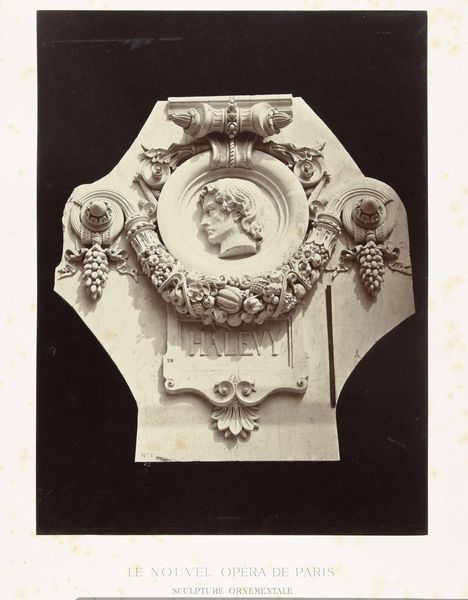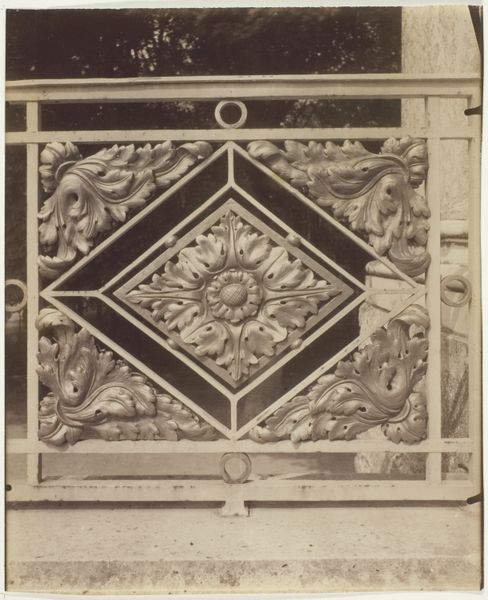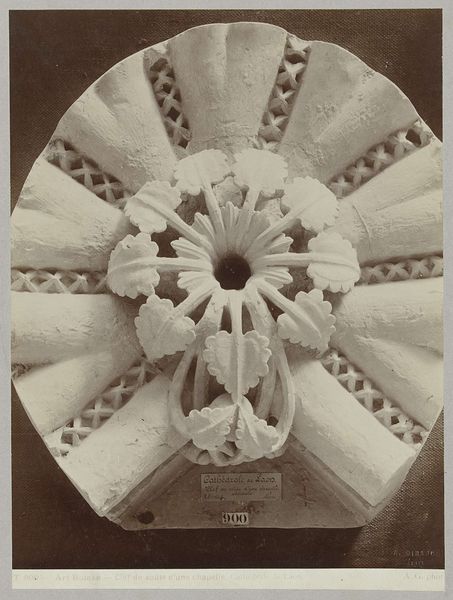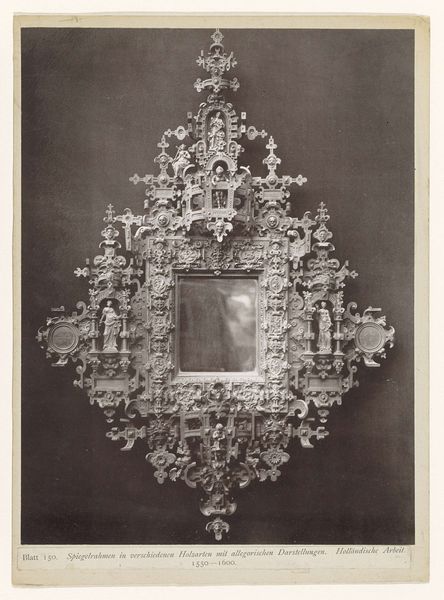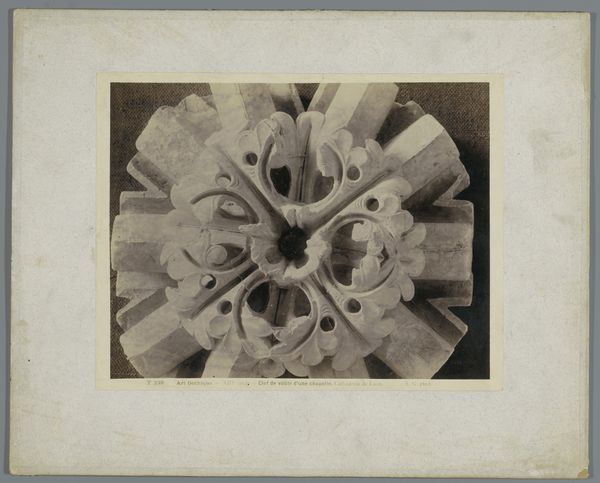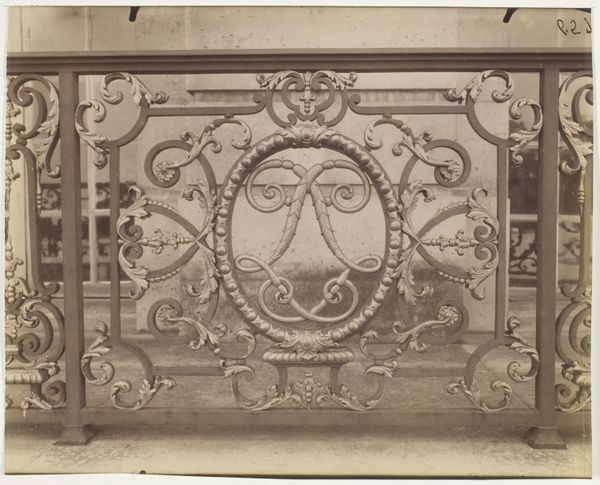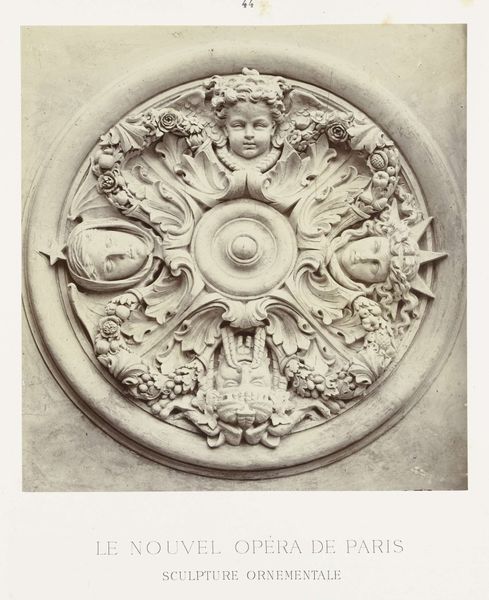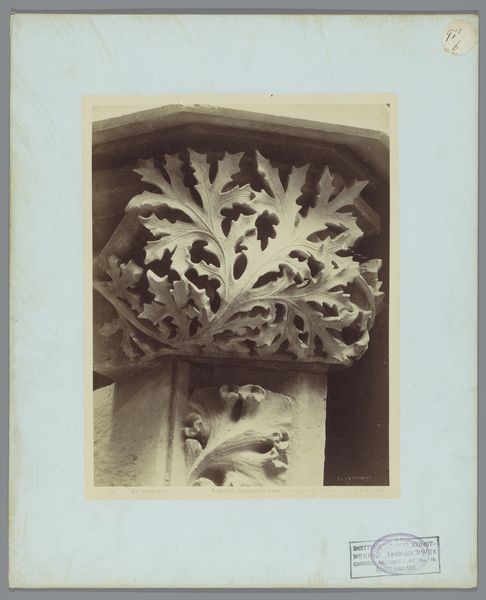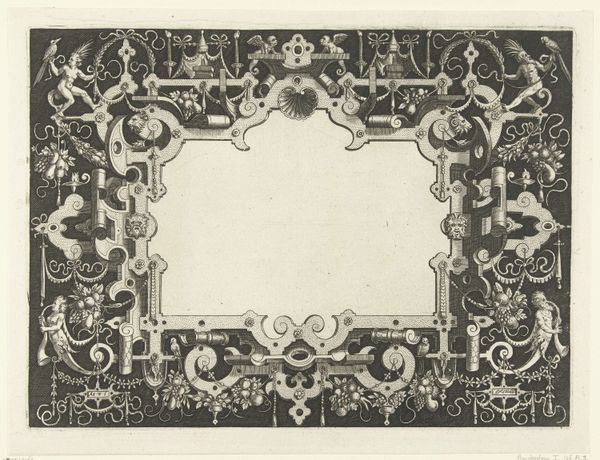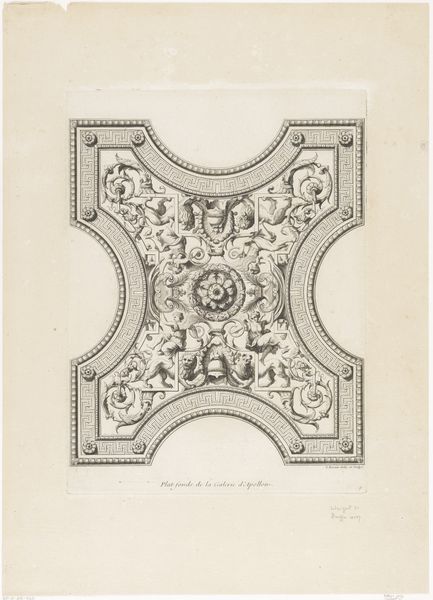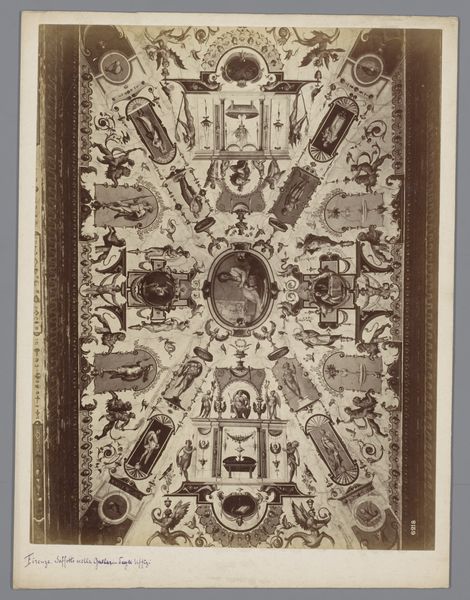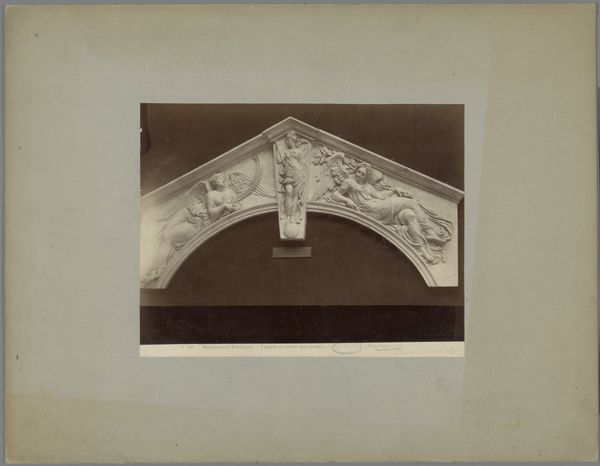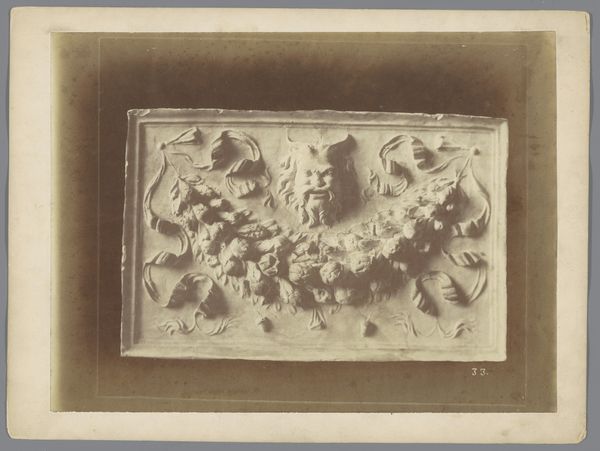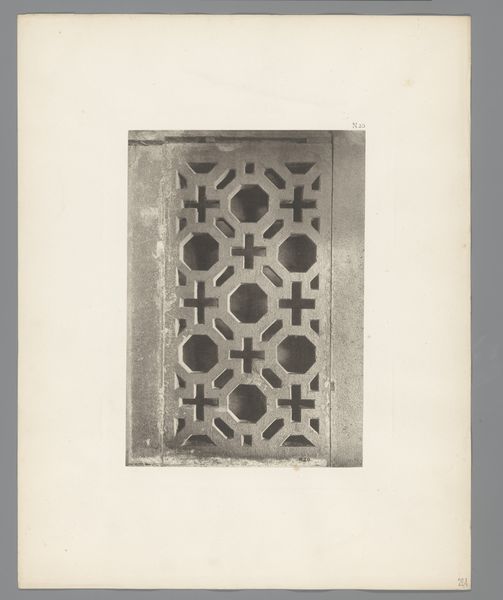
Vierkant plafondornament, een reliëf met afgebeeld bladeren. c. 1878 - 1881
0:00
0:00
relief, photography, plaster, architecture
#
relief
#
photography
#
geometric
#
plaster
#
decorative-art
#
architecture
Dimensions: height 280 mm, width 137 mm, height 620 mm, width 438 mm
Copyright: Rijks Museum: Open Domain
Editor: Here we have a photograph by Louis-Emile Durandelle, dating from around 1878-1881, showcasing a plaster relief: a square ceiling ornament adorned with leaves. I find the rigid symmetry fascinating, yet something about it feels cold. How do you interpret this work? Curator: It’s fascinating how photography here intersects with the decorative arts and architecture of the period, isn't it? I see more than coldness. Think about the late 19th century – the rise of industrialization, the shift in class structures, and burgeoning national identities. Floral and vegetal motifs were prevalent in design. Do you think it speaks to a desire for nature and organic forms amidst increasing urbanization and, frankly, pollution? It represents a desire for, even an idealized version of, nature in an increasingly industrialized society. Editor: That’s a great point! So, this isn't *just* decoration, it's also communicating anxieties around progress. How does its positioning on a ceiling further that? Curator: Exactly. And, consider its placement—a ceiling. Decoration overhead elevates it, almost as aspiration, literally looking up. Ornamentation in private residences was, for some classes, an overt display of wealth but beyond that, think of plaster and the way the working classes had less leisure time to spend, but certainly no freedom from breathing it in via labour. Does it resonate differently knowing more about labour exploitation and pollution at this time? Editor: Absolutely. I hadn't considered the perspective from class divides. Seeing it as a symbol of idealized nature and aspirations, juxtaposed with industrial realities, adds such a crucial layer. Curator: These designs reinforced hierarchies and idealized often-oppressive social structures through beauty. A key question we might ask of all art made at any time is ‘who did not benefit?’ Editor: Wow, this piece now speaks volumes more than before! I appreciate the expanded context, thank you.
Comments
No comments
Be the first to comment and join the conversation on the ultimate creative platform.
